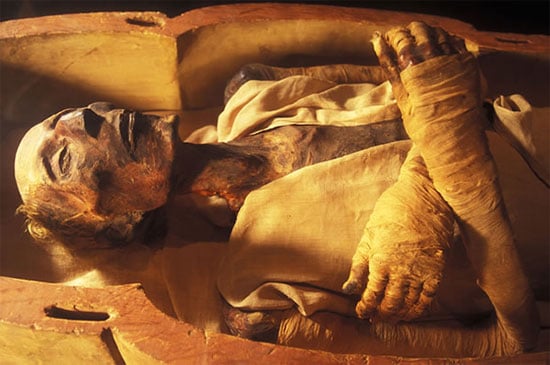The mummified body of Ramesses II was discovered in 1881 in
a cache of forty mummies. Priests had
deposited and concealed these mummies around 1,000 BCE because of an epidemic
of grave robbery. They remained
concealed for almost three thousand years until their discovery less than two
centuries ago.[1]
This finding confirms another distinctive element of the
Qur’an’s narrative of Pharaoh, its claim that his body would be preserved for
later generations:
Today We will save you in your body
so that you may be a sign for those after you.
Truly many people are heedless of Our signs. (10:92)
This claim is unique to the Qur’an, and is not found in the
Bible or any prior Jewish or Christian sources.
This āya has been compared
before to some rabbinic tales in which the Pharaoh repented and God rescued
him, so he went on to become the king of Nineveh.[2]
However, the obvious implication of this
āya is that Pharaoh’s last-minute
recantation was not deemed acceptable and he drowned, but his body was in some
way preserved as a sign for later generations.
The Qur’an here and elsewhere emphasizes Pharaoh’s demise as a
punishment for his crimes.
It is significant that the Qur’an never makes a similar
statement about other destroyed peoples, but only states that their abandoned
buildings, ruins, or “news” have been made signs for later generations. This āya
explicitly specifies that Pharaoh’s body was preserved as a sign, and not just
for his own time or witnesses (as some commentators have suggested), but in open
terms—“for those after you” (li-man
khalfa-ka). As Fatoohi and
Al-Dargazelli point out, “Since its discovery, Ramesses II’s mummy has been
seen by people from everywhere. It is
currently one of the major tourist attractions in the Egyptian Museum in Cairo.”[3]
An objection that has been raised before is that at the time
of death, Ramesses was at the ripe age of ninety and was suffering from
atherosclerosis as well as battle wounds.
He would have not been in the physical condition to pursue the
Israelites into the desert. The Bible
answers this objection best when it states that Pharaoh’s stubborn and reckless
actions were a consequence of God hardening his heart, in order that God may
display His signs against him (Exod. 7:3), or as the Qur’an says, “as a sign
for those after you.”

excellent!
ReplyDeleteSalam Alaykum,
ReplyDeleteSomeone asked that wasn't Nabi Musa (AS) preaching at the time of Manphetah rather than Ramesis II?
(Or perhaps the reworded objection is that how can we be sure of the identity of the Pharaoh at that time, are we Muslims simply overeager to make an Ayah of the Quran to match with some information we think should match it?)
Wa `alaykum us-salam wa rahmatullahi wa barakatuhu,
DeleteSee my post here: http://quranic-musings.blogspot.com/2015/04/the-exodus-in-quran-bible-and-history_13.html
This is insane. Thanks for the post,
ReplyDeleteJazakAllahu Khair.
When is your next post going to be, in sha Allah?
ReplyDeleteI just finished a really big project, which I will hopefully be announcing soon. Now I have a break, so I am hoping to resume this series shortly!
Delete....awesome.
Delete